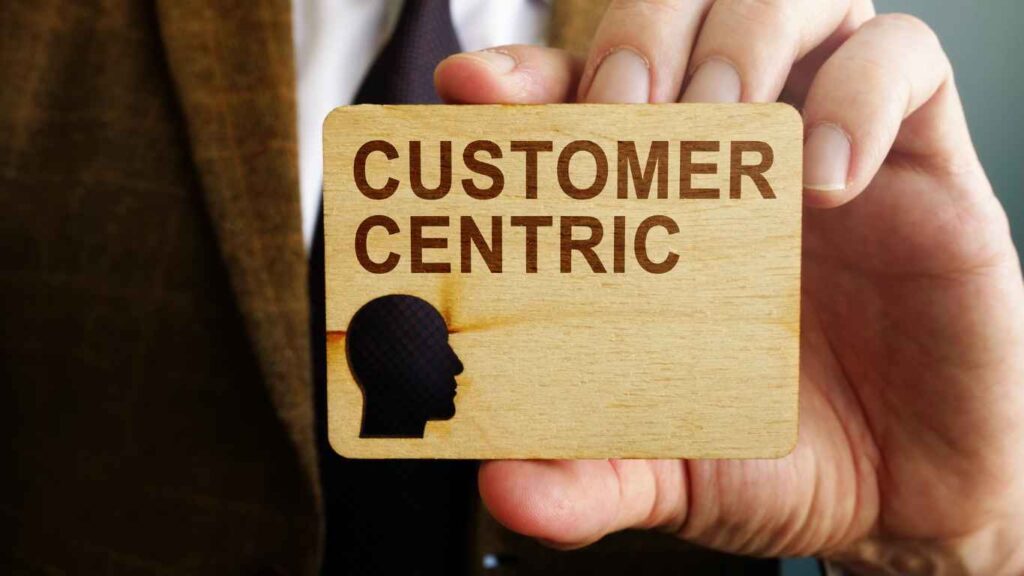SaaS product management is a rapidly growing field that has gained immense popularity in recent years. With the increasing demand for software-as-a-service (SaaS) products, the role of a product manager has become more crucial than ever. However, managing a SaaS product is not an easy task. It requires a unique set of skills and strategies to successfully navigate the complex world of SaaS.
In this blog post, we will dive into the world of SaaS product management and explore the key aspects of mastering this art. Whether you are a seasoned product manager or just starting out, this post will provide valuable insights and tips on how to excel in the world of SaaS product management.
Tabel Of Content
- The Basics of SaaS Product Management
- Understanding the SaaS Business Model
- The Role of Data in SaaS Product Management
- The Importance of Customer Centricity
- Key Skills for SaaS Product Managers
- Challenges and Opportunities in SaaS Product Management
The Basics of SaaS Product Management

Diving into the heart of SaaS product management, it revolves around the concept of creating value for the customers by building and managing software designed to meet their specific needs. Think of a SaaS product manager as a conductor orchestrating a symphony. They are in charge of setting the product’s vision and plotting its roadmap, acting as a lynchpin connecting various teams and ensuring the product stays competitive in the ever-evolving digital market.
The role of a SaaS product manager is multi-dimensional, straddling the line between tech-savvy and business-oriented. They are expected to don multiple hats, encompassing a gamut of technical expertise, sharp business insight, and stellar people skills. This role is far from static. Instead, it’s a dynamic dance, with the product manager constantly adjusting their steps to the rhythm of shifting market trends, evolving customer preferences, and the steady march of technological progress.
Picture this – you’re a SaaS product manager. Your day might start with a deep dive into customer feedback, then pivot to collaborating with the development team to refine a new feature, followed by a strategy session to plan future updates. All this while keeping your finger on the pulse of the market to ensure your product remains a cut above the rest.
It’s not a role for the faint-hearted, but for those who thrive on challenges, crave variety, and have a passion for delivering customer-centric solutions, it’s the perfect fit. For those who master it, the rewards – both personal and professional – can be immense. So, let’s gear up and delve further into the intriguing world of SaaS product management.
Understanding the SaaS Business Model

Step into the world of SaaS, where the traditional boundaries of software usage get beautifully blurred. The software isn’t something you buy and install on your local machine anymore. Instead, it’s served up hot and fresh over the internet, ready to be used whenever and wherever you are. This is the essence of the Software as a Service or SaaS business model.
Picture this – you’re a music lover, but instead of buying individual albums, you subscribe to a service like Spotify. You pay a regular fee, say, monthly or yearly, and voila, you get access to a vast music library. Now replace the music with software, and you have the SaaS model in a nutshell.
A key feature of the SaaS business model is its recurring revenue structure. It’s like a well that keeps giving, with customers continually contributing through their subscription fees. This regular income stream provides SaaS companies with financial stability and predictability, enabling them to plan and invest in the future with confidence.
But what’s in it for the customers? Well, lots actually. To start with, the SaaS model significantly cuts down upfront costs. No more shelling out hefty amounts to purchase the software outright. Plus, the scalability of the SaaS model means you can adjust your subscription level as your needs change, ensuring you only pay for what you use.
Add to this the convenience factor – being able to access your software from any device, any time you’re online. No more being tethered to a specific device or location. And then, there’s the cherry on top – automatic updates. Say goodbye to manually downloading and installing updates. With SaaS, you’re always using the latest and greatest version of the software, without lifting a finger.
Peeling back the layers of the SaaS business model reveals a win-win scenario for both providers and users. It’s easy to see why it’s quickly become a favorite in the digital world. As we delve deeper into SaaS product management, remember this model – it forms the backbone of everything that follows.
The Role of Data in SaaS Product Management
If SaaS product management were a ship, data would undoubtedly be its compass. As a product manager in the realm of SaaS, you’ll find yourself navigating an ocean of information, using data as your trusted guide to steer your product towards success. And it’s not just about collecting data, but learning to interpret it effectively to inform your decision-making process.
Consider user behavior data as a window into your customers’ minds. By analyzing this data, you’ll gain insights into how users interact with your product, what features they love, what they ignore, and what they find frustrating. This understanding is pivotal in aligning your product development to meet user needs, ultimately leading to higher customer satisfaction.
Next, let’s talk about product performance data. Think of this as the health check-up of your product. It provides you with a clear picture of how well your product is performing, where it shines, and where it falls short. Analyzing this data helps you identify strengths to capitalize on and weaknesses to address, thereby enhancing your product’s overall performance.
Then there are trend data and predictive analytics, your crystal ball into the future. They help you identify emerging trends in user behavior and the wider market, allowing you to make informed predictions and future-proof your product strategy.
Another critical set of data for SaaS product managers revolves around key performance indicators or KPIs. These include metrics like churn rate, customer acquisition cost, customer lifetime value, and daily active users. By monitoring these KPIs, you can gauge the success of your product, identify areas for improvement, and track the impact of changes you implement.
And let’s not forget about A/B testing, your tool for product optimization. By testing different versions of a feature or user experience, and analyzing the resulting data, you can identify what works best for your customers and your business.
In the world of SaaS product management, data is not just numbers on a screen. It’s a powerful tool that informs, guides, and empowers. Embrace it, and it can be your key to unlocking product success.
The Importance of Customer Centricity

Imagine standing at the helm of a ship. Your destination? Customer satisfaction. Your route? The path paved by customer-centricity. To truly excel in SaaS product management, customer centricity needs to be more than just a buzzword. It’s a guiding principle that shapes your decisions, influences your strategies, and defines your product’s journey.
In the fast-paced world of SaaS, customers demand solutions that not only cater to their current needs but also anticipate future ones. This is where customer-centricity comes into play. It means seeing your product through the customers’ eyes, understanding their pain points, and delivering a product that goes beyond meeting needs to exceeding expectations.
Being customer-centric is like wearing a pair of customer-tinted glasses. It’s about immersing yourself in their world, soaking up their feedback, and using that knowledge to fine-tune your product. It’s about creating an open dialogue with your users, allowing their voices to resonate in every nook and cranny of your product strategy.
With a customer-centric approach, every new feature, every update, every strategic decision, is driven by one core question – “How does this add value to the customer?”. You see, being customer-centric isn’t just good for customers; it’s good for business too. It fosters customer loyalty, boosts word-of-mouth referrals, and cultivates a strong brand image. In short, it’s a win-win strategy.
However, true customer centricity isn’t a one-and-done deal. It’s not about simply launching a product that customers love and then resting on your laurels. It’s an ongoing commitment. A commitment to keep listening, keep learning, and keep evolving alongside your customers.
So, as a SaaS product manager, remember to make customer centricity your North Star. Let it guide you in navigating the vast seas of SaaS product management. After all, at the end of the day, it’s the customer who decides the success of your product. And there’s no better compass to guide your journey than their feedback. Embrace it, act on it, and watch as your product takes flight in the realm of customer satisfaction.
Key Skills for SaaS Product Managers
Diving into the toolbox of a successful SaaS product manager, we find an intriguing mix of diverse skills. A robust understanding of technology sits at the core, providing the foundation to comprehend not only the nuts and bolts of their product but also to stay abreast with the wave of tech advancements. This tech-savviness allows product managers to harness emerging trends and seamlessly integrate them into their product roadmap.
Next, we stumble upon a healthy dose of business acumen. This skill is like a compass, directing the product alignment with the overarching business goals. It fuels the ability to craft smart pricing strategies and make financially sound decisions that serve the business’s bottom line while keeping customer value at the forefront.
Amid these skills, we also spot a strong thread of communication skills weaving its way through. These skills are the lifeline of a product manager, fostering collaboration across different teams, bridging the gap between technical jargon and business language, and ensuring a clear and open dialogue with customers.
But wait, there’s more. A knack for problem-solving, sharp decision-making skills, and proficiency in project management are also essential elements in a SaaS product manager’s skill set. Problem-solving skills are their secret weapon, enabling them to tackle challenges head-on and transform them into opportunities.
The ability to make informed, timely decisions plays a crucial role in maintaining the product’s competitive edge in the dynamic SaaS market. Meanwhile, project management skills keep the product development process on track, ensuring timely delivery of features and updates.
In the exhilarating ride that is SaaS product management, these skills are the accelerators, brakes, and navigation system. They equip product managers to maneuver the highs and lows, twists and turns, and crossroads that define their journey. The magic lies not just in possessing these skills, but in harmoniously integrating them to create a symphony of value for both the business and its customers.
So, if you’re embarking on a career in SaaS product management, start honing these skills now. The more adept you become, the smoother and more successful your journey will be.
Challenges and Opportunities in SaaS Product Management

Navigating the high seas of SaaS product management is no small feat. On one hand, we have challenges aplenty, rearing their heads in various forms. You’re perpetually racing to keep pace with the swift current of technological progress, while at the same time, trying to outsmart the daunting specter of competition. And then, there’s the tightrope walk of upholding a customer-first approach, all the while juggling the demands and pressures of running a business.
Yet, every cloud has a silver lining. Each challenge brings with it a treasure chest of opportunities waiting to be unlocked. The dynamism of the SaaS industry, marked by its rapid evolution and growth, opens up vast avenues for innovation and expansion. As a SaaS product manager, it’s your opportunity to be the master locksmith.
Staying ahead of the curve involves staying informed, keeping your fingers on the pulse of the SaaS industry, and being ready to pivot at a moment’s notice. By doing so, you can turn technological advancements from being a challenge to becoming a potent weapon in your product management arsenal.
Competition can be a fierce beast, but it’s also a catalyst for continuous improvement and differentiation. To outshine your competitors, consider it an opportunity to innovate, elevate your product, and carve a unique niche for it in the market.
The challenge of maintaining a customer-centric approach amidst business pressures is essentially a balancing act. It’s about understanding that creating real value for customers doesn’t have to come at the expense of your business goals. Instead, it’s an opportunity to align both, striking a harmonious balance that serves both parties.
Remember, satisfied customers don’t just bring recurring revenue; they also turn into your brand advocates, bringing in new users through their glowing referrals.
In the adventurous journey that is SaaS product management, the key to weathering the storms and harnessing the winds of opportunity lies in adopting best practices, leveraging data to drive decisions, and never losing sight of the customer needs. Armed with this knowledge, you are not just equipped to manage the challenges, but to convert them into stepping stones towards success.




